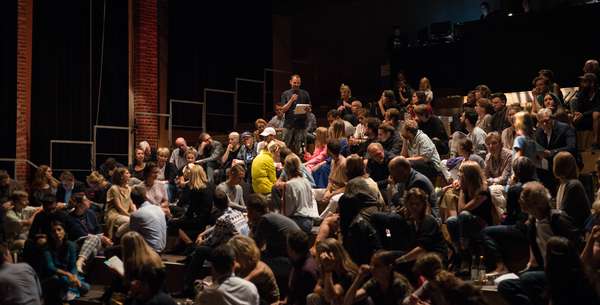Idea by
Julia Udall, Alex De Little, Jon Orlek, Joe Gilmore and Richard Cook
Julia Udall
https://sonicactsofnoticing.org
Call for ideas 2021
Sonic Acts of Noticing
Sonic Acts of Noticing
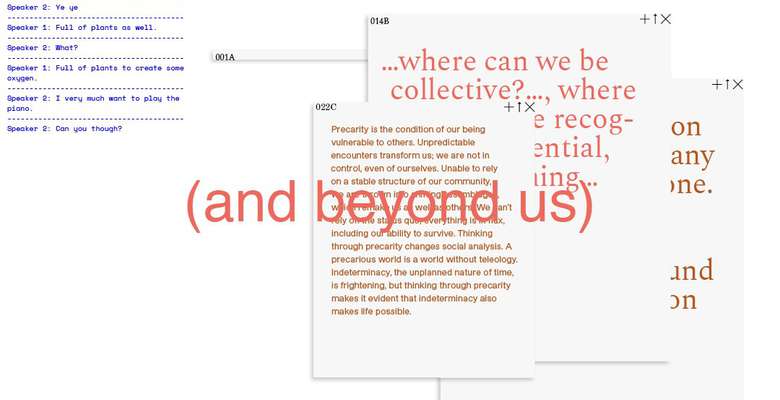
- New alliances
Following the potential of the sonic ‘as a means for enabling new conceptualizations of the public sphere and expressions of emancipatory practices’ (LaBelle, 2018), we offer a tool for careful listening as a way to (re)think and (re)make urban space by drawing attention to forms of collectivity, and supporting productive and agonistic relations. We prototype an interactive audio-textual environment, where sound compositions comprised of field recordings from three ‘patches’ (Tsing, 2015) in Sheffield UK, collide with textual artefacts that are temporally coded to the audio. Provocations, quotations, and critical and journalistic writing, augment, subvert, amplify and dissonate listening, in relation to your navigation of the site and spaces of the street, opening new possibilities and configurations. During Future Architecture, we propose to introduce this virtual interface as a tool for approaching sites, and working with groups to consider the architectural possibilities that emerge

Sonic Acts of Noticing is a prototype of a pedagogical tool for careful listening as spatial practice initially developed in response to the question ‘how can we find and amplify acts of care on the high street?’. We wish to collaboratively test it as a way to (re)think and (re)make urban space by drawing attention to forms of collectivity, and critical care.
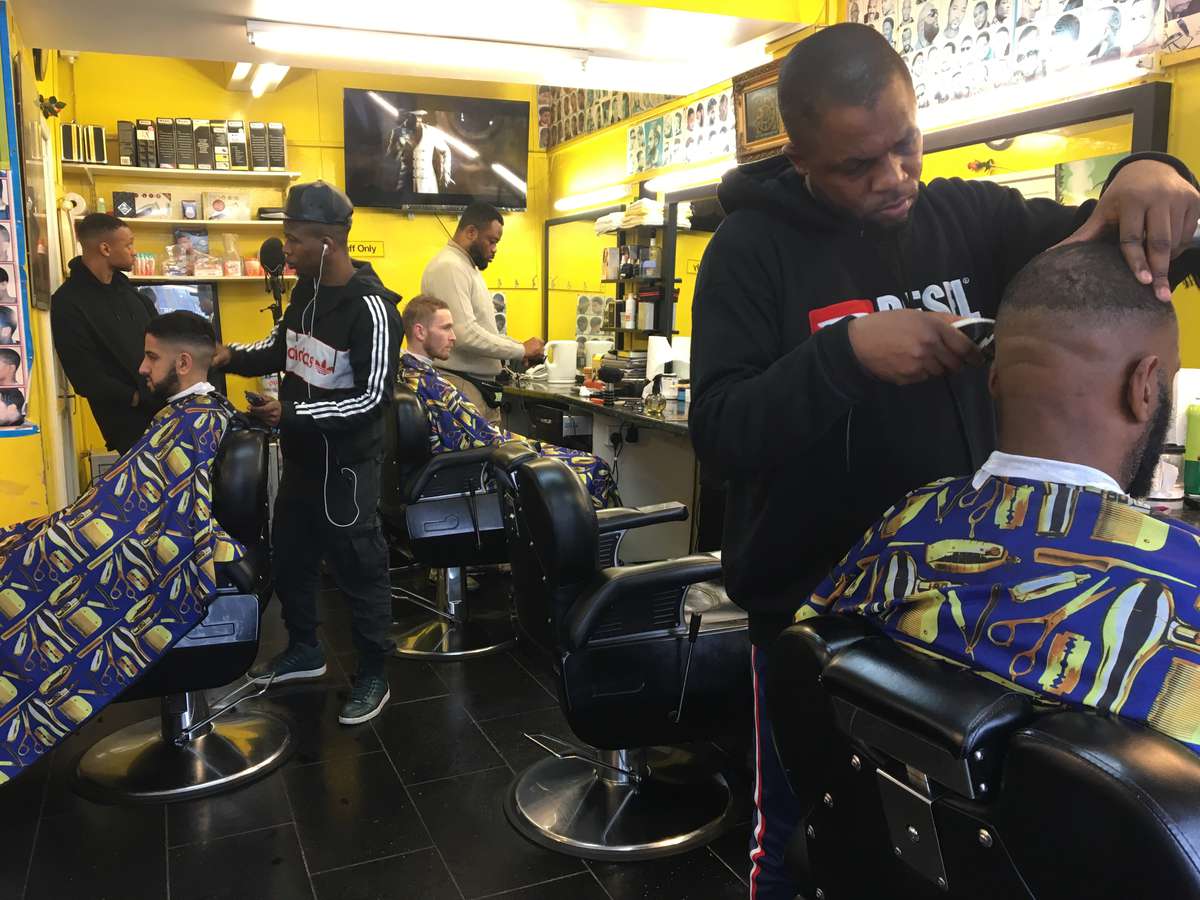
Following Multispecies Anthropologist Anna Tsing, we conceive of space as patch, (an open ended assemblages of human and non-human activity). Listening, therefore allows us to enter into this patch with curiosity and openness. In the case of the barbers, pavements and cafes we visited in developing this initial prototype, we gained insights into some of the multilayered and reciprocal acts of mutuality, generosity and hospitality that exist in high street spaces.
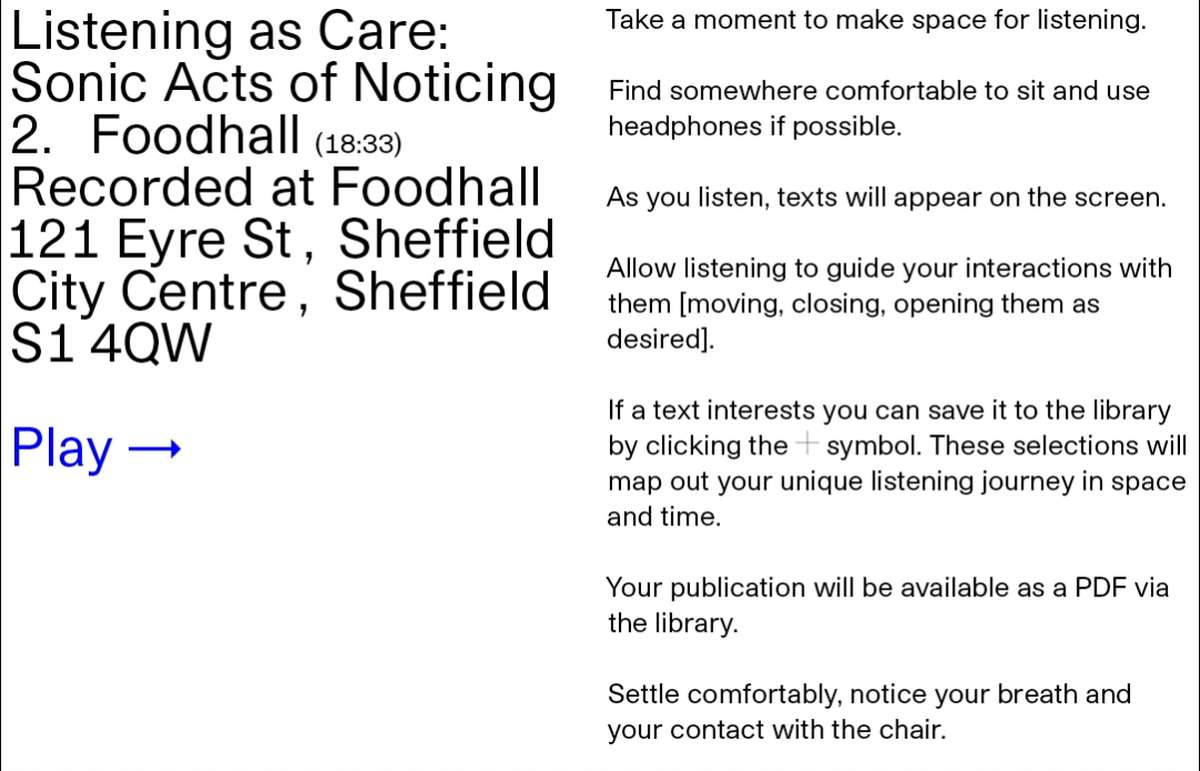
As host to sonic compositions, this tool allows us to initiate various forms of collective and personal listening, recording, responding, re-listening and publishing with and from this patch, in ways that support creative and critical approaches to design. As you listen you gather textual artefacts that become a unique publication mapping your spatio-temporal journey through the virtual and physical spaces.
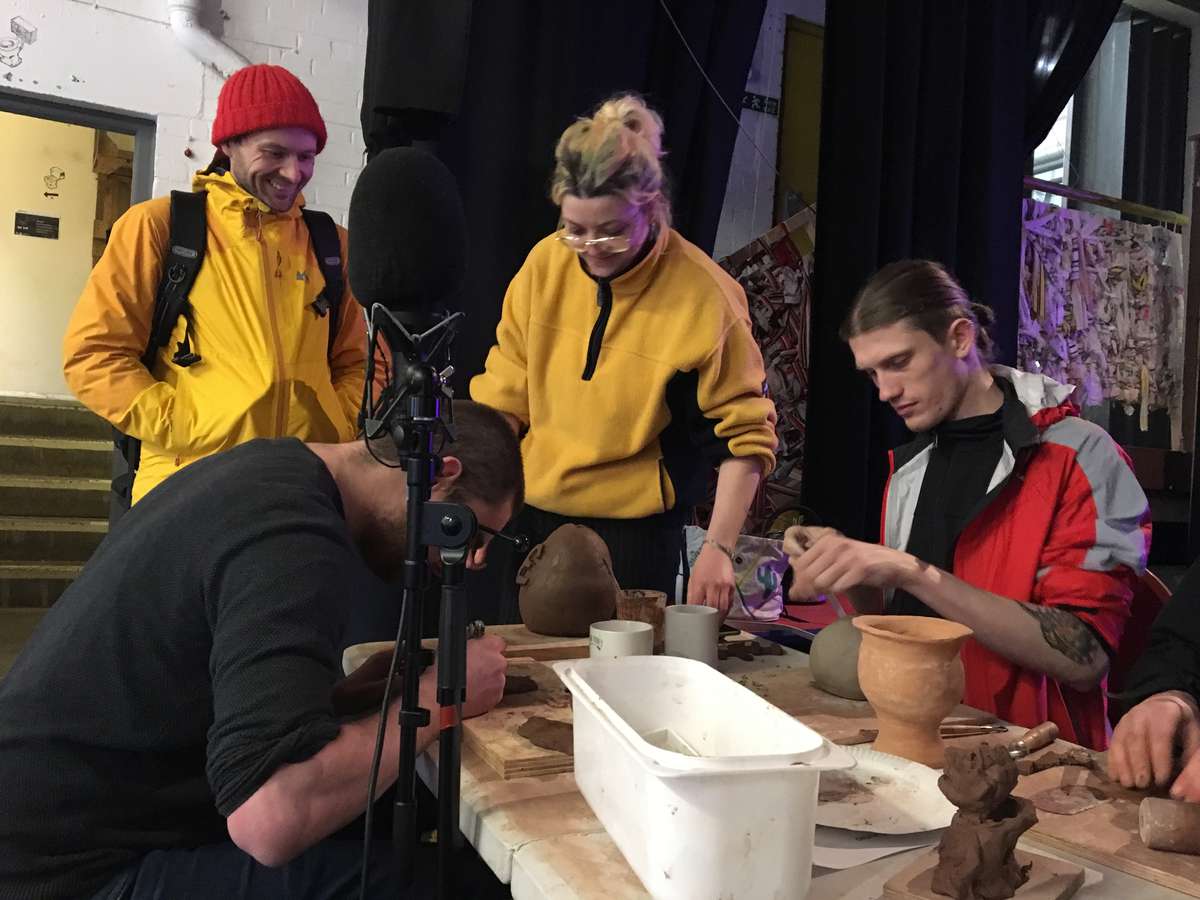
Listening operates as a way to gather publics, and pay attention to social relations, without assuming their composition and possibilities. Through multiple modes of listening, and by assembling textual artefacts, different things are brought into relation than when the visual is foregrounded...the intensities of a revving engine or leaking of water onto a concrete floor share attention with conversations about community economies, or almost imperceptible chatter of intimacy in making something

We are interested in the potential of this project as a pedagogical tool, for collaborative design that foregrounds the political, the ecological and the social. We understand this as opening the possibility for a public site of politics and collective learning. It offers a different point of departure for processes of design, by interrupting images and preconceptions of how space is constituted. Listening is produced as care for an entangled world.
Sonic Acts of Noticing
Sonic Acts of Noticing

- New alliances
Following the potential of the sonic ‘as a means for enabling new conceptualizations of the public sphere and expressions of emancipatory practices’ (LaBelle, 2018), we offer a tool for careful listening as a way to (re)think and (re)make urban space by drawing attention to forms of collectivity, and supporting productive and agonistic relations. We prototype an interactive audio-textual environment, where sound compositions comprised of field recordings from three ‘patches’ (Tsing, 2015) in Sheffield UK, collide with textual artefacts that are temporally coded to the audio. Provocations, quotations, and critical and journalistic writing, augment, subvert, amplify and dissonate listening, in relation to your navigation of the site and spaces of the street, opening new possibilities and configurations. During Future Architecture, we propose to introduce this virtual interface as a tool for approaching sites, and working with groups to consider the architectural possibilities that emerge

Sonic Acts of Noticing is a prototype of a pedagogical tool for careful listening as spatial practice initially developed in response to the question ‘how can we find and amplify acts of care on the high street?’. We wish to collaboratively test it as a way to (re)think and (re)make urban space by drawing attention to forms of collectivity, and critical care.
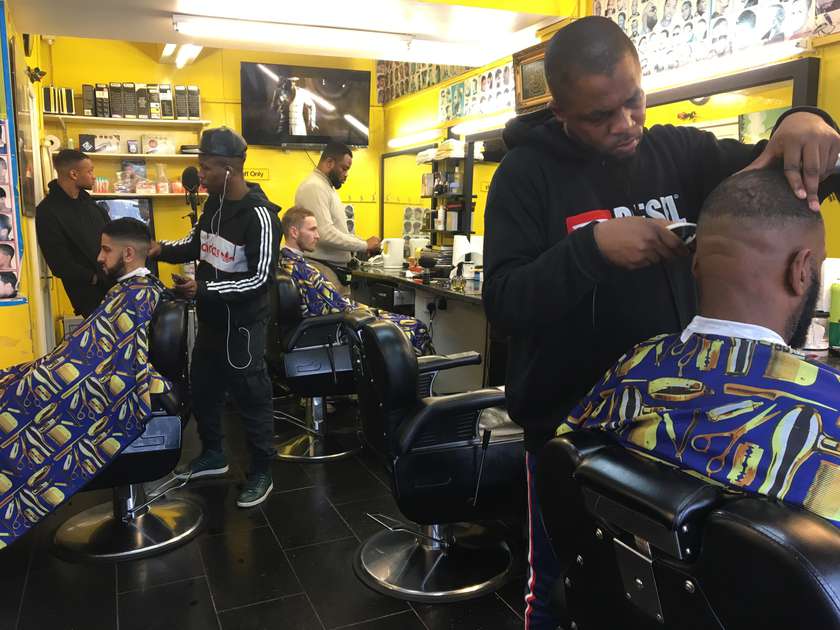
Following Multispecies Anthropologist Anna Tsing, we conceive of space as patch, (an open ended assemblages of human and non-human activity). Listening, therefore allows us to enter into this patch with curiosity and openness. In the case of the barbers, pavements and cafes we visited in developing this initial prototype, we gained insights into some of the multilayered and reciprocal acts of mutuality, generosity and hospitality that exist in high street spaces.
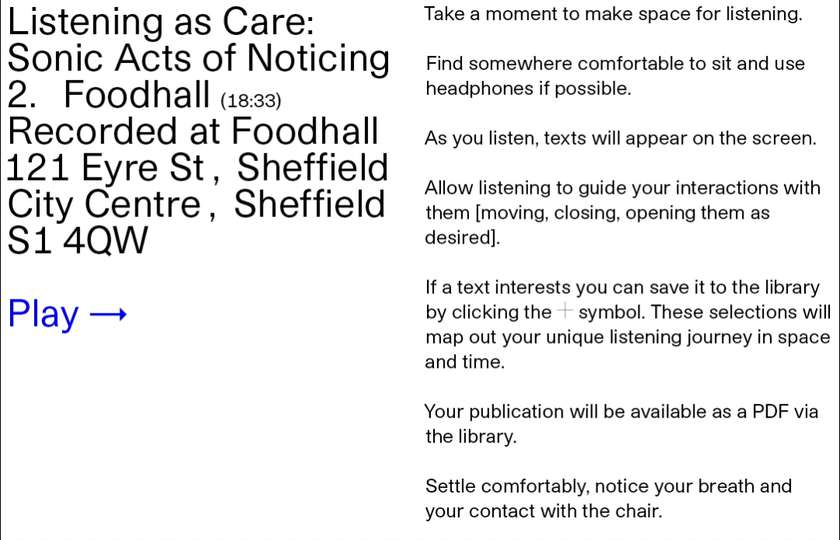
As host to sonic compositions, this tool allows us to initiate various forms of collective and personal listening, recording, responding, re-listening and publishing with and from this patch, in ways that support creative and critical approaches to design. As you listen you gather textual artefacts that become a unique publication mapping your spatio-temporal journey through the virtual and physical spaces.
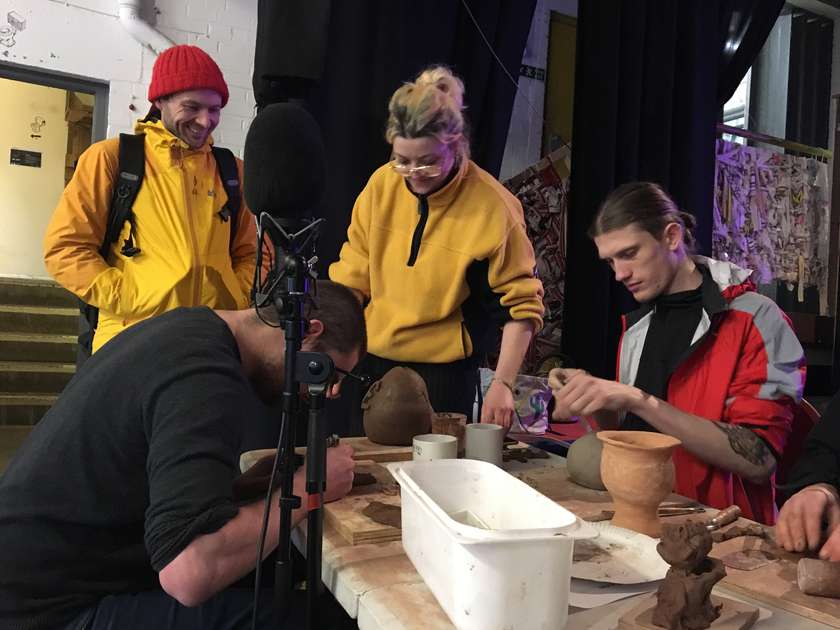
Listening operates as a way to gather publics, and pay attention to social relations, without assuming their composition and possibilities. Through multiple modes of listening, and by assembling textual artefacts, different things are brought into relation than when the visual is foregrounded...the intensities of a revving engine or leaking of water onto a concrete floor share attention with conversations about community economies, or almost imperceptible chatter of intimacy in making something
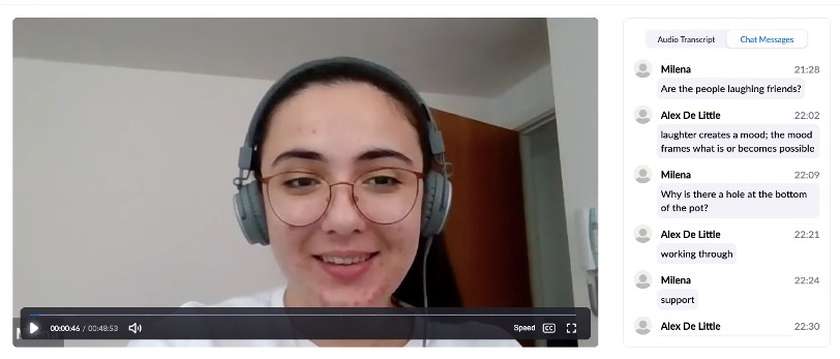
We are interested in the potential of this project as a pedagogical tool, for collaborative design that foregrounds the political, the ecological and the social. We understand this as opening the possibility for a public site of politics and collective learning. It offers a different point of departure for processes of design, by interrupting images and preconceptions of how space is constituted. Listening is produced as care for an entangled world.
